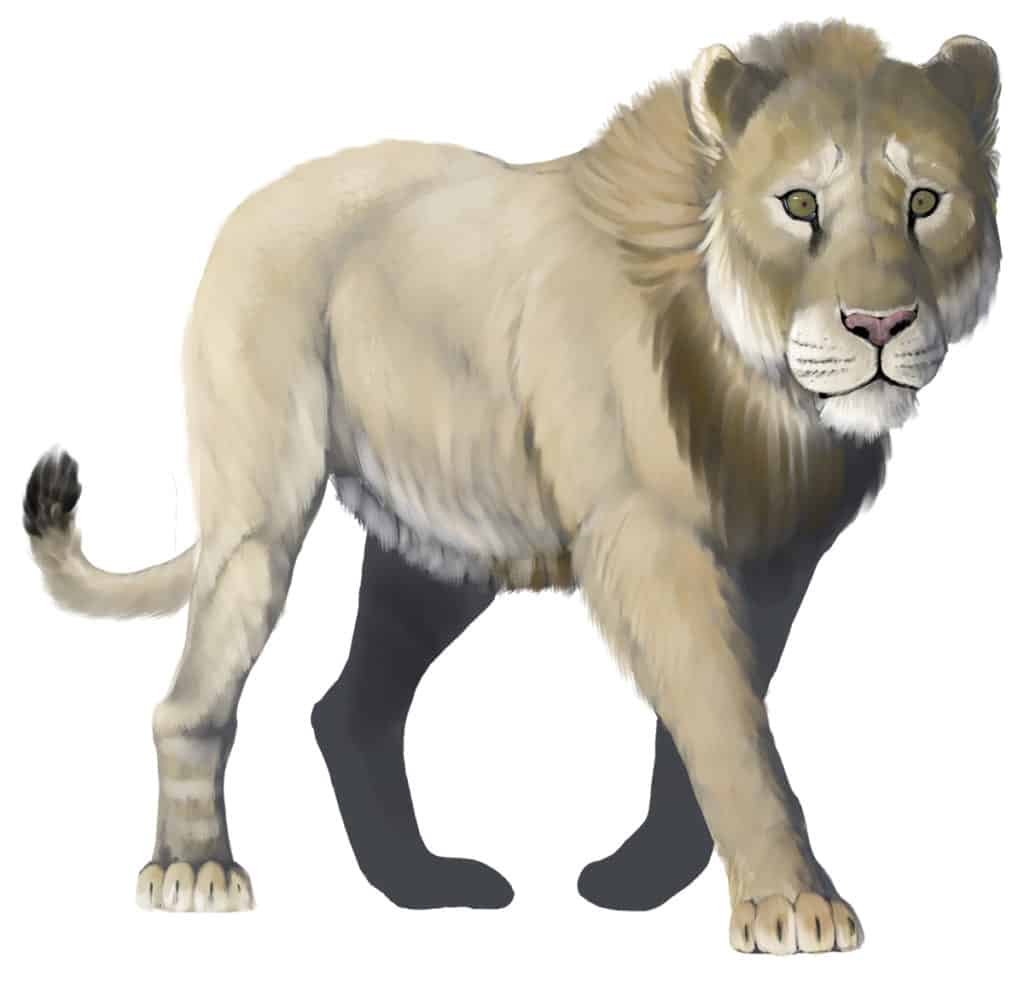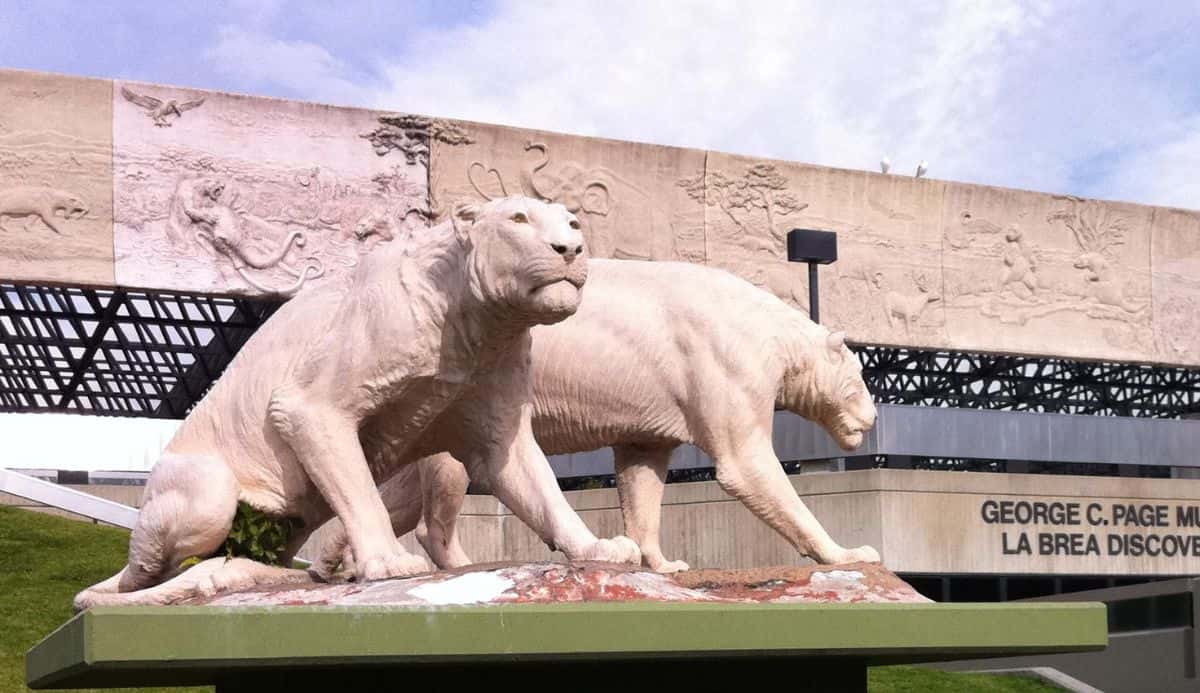The largest cat to roam North America during the Pleistocene was the American Lion (Panthera atrox). Panthera atrox is Latin for “fearsome panther.”
About 25% higher than today’s African Lion, the American Lion ranged between 5 and 8 feet in length and weight between 500 and 800 pounds.
When Did the American Lion Live?
Fossil evidence suggest that the American Lion existed between 340,000 years ago and 11,000 years ago during the late Pleistocene epoch.
As an apex predator, it played a crucial role in the ecosystem of the time, hunting large herbivores such as bison, horses, and even young mammoths. The American lion’s reign came to an end approximately 11,000 years ago, coinciding with the extinction of numerous other megafauna species such as a mammoth in the Americas.
Researchers aren’t sure of the reason why the American Lion went extinct. Hypotheses include competition with human hunters for food and the effects of climate change.
The American lion’s extinction likely had a cascading effect on other species in its ecosystem. As an apex predator, the American lion played a crucial role in controlling herbivore populations, which in turn influenced the abundance of plant species.
With the disappearance of the American lion, the balance between predator and prey was disrupted, potentially leading to overpopulation of certain herbivore species and increased competition for resources. The loss of the American lion also affected scavenger species, which would have relied on the remains of the lion’s kills for sustenance.

Size of the American lion
The American lion was an impressive and formidable creature, standing at a shoulder height of around 4.2 feet (1.3 meters) and measuring up to 11.5 feet (3.5 meters) from head to tail.
It is estimated to have weighed between 550 to 930 pounds (250 to 420 kilograms), making it one of the largest felids to have ever lived.
In comparison, male African lions typically weigh around 420 pounds (190 kilograms) and measure approximately 8.2 to 9.8 feet (2.5 to 3 meters) in length.
Where did American lions roam?
Evidence of American lions has been discovered to the north in southern Alaska, to the south in southern Mexico, to the east in Maryland, and to the west in California.
Fossil evidence for the American Lion has not been discovered in northeastern United States and eastern Canada. Since those areas were covered in boreal forests during the Pleistocene, researchers hypothesize that the American Lion preferred open grassland as its habitat.
La Brea Tar Pits
80 individual American Lions have been recovered from the La Brea Tar Pits in Los Angeles. Two-thirds of those lions recovered have been males.

Like the African Lion, the American Lion is believed to have grouped together in small prides.
What did the American lion eat?
A carnivore, the American Lion was believed to have hunted Pleistocene mammals such as horses, deer, camels, ground sloths, young mammoths, and bison.
Was the American lion related to the African lion?
Though the American lion shares its name with the modern African lion, the two species are not as closely related as their names might suggest.
In fact, the American lion is more closely related to the extinct Eurasian cave lion (Panthera spelaea) and the still extant jaguar (Panthera onca). Genetic studies have shown that the American lion, Eurasian cave lion, and jaguar diverged from a common ancestor around 1.9 million years ago.
References
American Lion. (n.d.). NPS.gov – White Sands. http://npshistory.com/brochures/whsa/american-lion-2016.pdf
The big cats (U.S. National Park Service). (2021, October 12). NPS.gov (U.S. National Park Service). https://www.nps.gov/articles/000/the-big-cats.htm
Extinct American lion (Panthera atrox) fact sheet. (2021, March 30). San Diego Wildlife Alliance. https://ielc.libguides.com/sdzg/factsheets/extinctamericanlion






